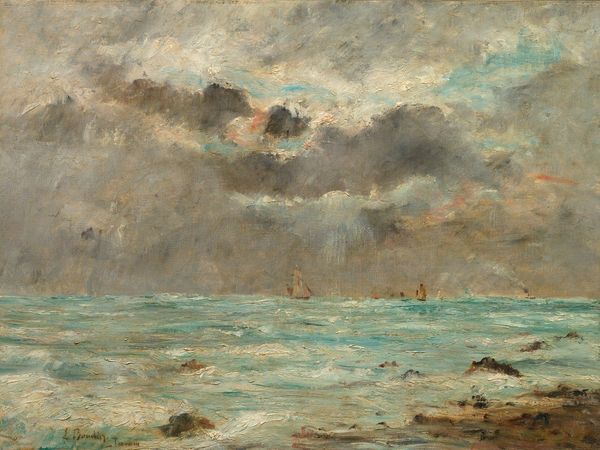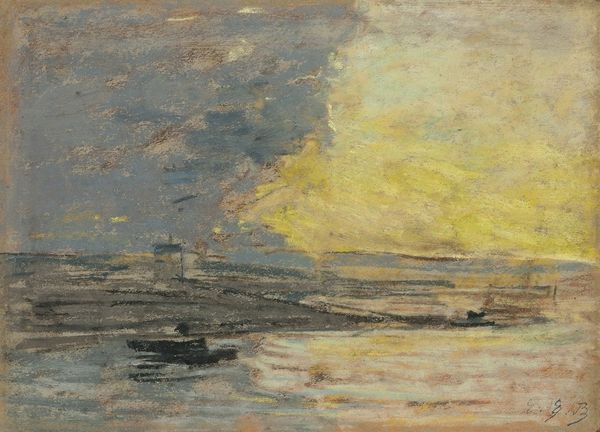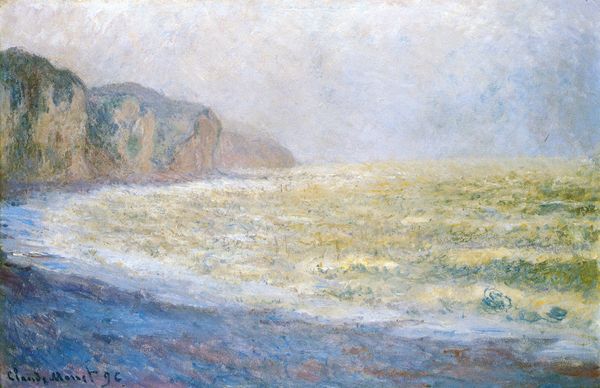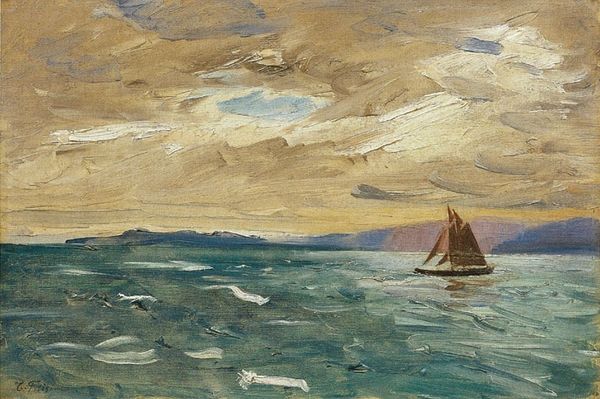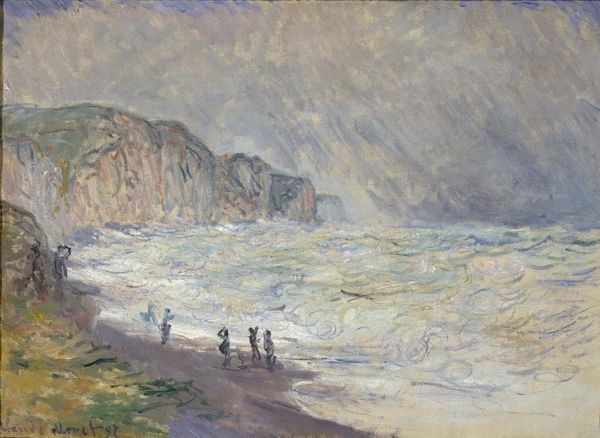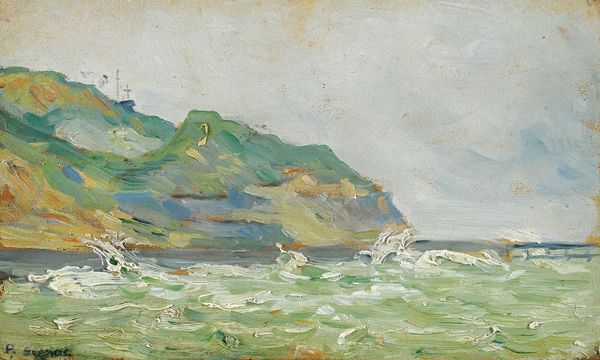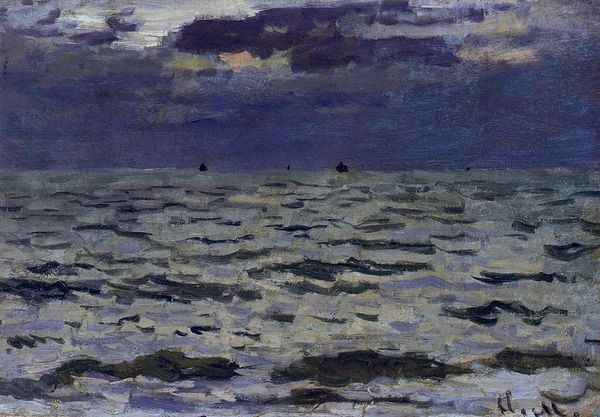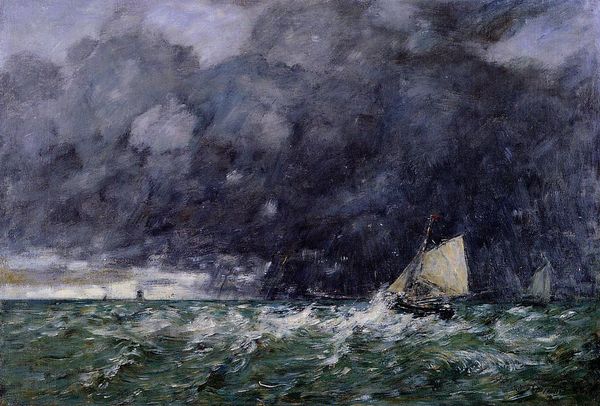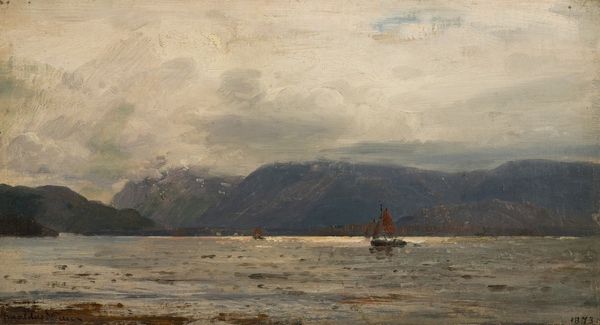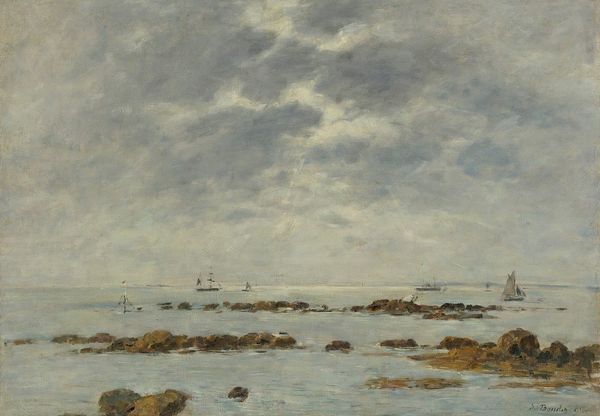
Copyright: Public domain
Curator: Before us hangs Claude Monet's "Ice, Lock Port Villez," painted in 1893. It’s a captivating example of his Impressionist approach to landscape. Editor: It evokes a raw, almost desolate feeling, doesn’t it? The light seems diffused, and the palette is strikingly subdued, mostly cool grays and blues, which creates this hazy, chilly atmosphere. Curator: Absolutely. Monet's interest here lies in capturing a specific moment in time. The way he depicts the frozen Seine—it speaks to the harsh winter conditions endured by those who lived and worked along the river. Think of the laborers who depended on the river for transport and trade now impeded by ice. Editor: True, and visually, it's compelling how the loose brushstrokes delineate the ice floes—short, choppy marks of paint that really animate the surface of the water. His attention to capturing the effect of light reflecting on these icy fragments gives it an almost tactile quality. Curator: Precisely. Consider how this approach embodies Impressionism's core concern with rendering sensory impressions. Monet wasn't interested in precise, photographic accuracy but rather in evoking the experience of being there. And remember that "en plein air" painting shaped his process significantly; these works reveal both a response to natural elements and a commentary on France’s infrastructure, affected as it was by seasons and industry. Editor: Still, you can't overlook the formal elegance, the overall composition. The contrast between the churning water and the misty, distant shore creates depth. There’s an interplay between horizontals and the delicate masts of a lone sailboat punctuating the horizon line. It creates visual tension that keeps the eye moving throughout the scene. Curator: Indeed, the aesthetic accomplishment cannot be divorced from the material and historical conditions from which the image emerged; understanding how the Seine enabled industrial activities, how winter inhibited work along this thoroughfare… This deepens our insight into what Monet was both witnessing and immortalizing. Editor: So while it’s about surface impressions, this particular impression carries with it economic implications. Thanks to Monet’s brush we find an environment transformed both formally and in labor. Curator: A compelling meeting of aesthetics and lived experience. Editor: Yes, and a testament to how the visual translates social history into sensation.
Comments
No comments
Be the first to comment and join the conversation on the ultimate creative platform.
